
A comune is an administrative division of Italy, roughly equivalent to a township or municipality. It is the third-level administrative division of Italy, after regions and provinces. The comune can also have the title of città.
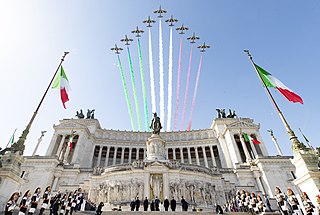
Public holidays in Italy are established by the Italian parliament and, with the exception of city or community patronal days, apply nationwide. These include a mix of national, religious and local observances. As for Whit Monday, there is an exception for South Tyrol. In Italy there are also State commemoration days, which are not public holidays.
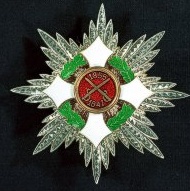
The Military Order of Italy is the highest military order of the Italian Republic and the former Kingdom of Italy. It was founded as the Military Order of Savoy, a national order by the King of Sardinia, Vittorio Emanuele I, Duke of Savoy in 1815. The order is awarded in five degrees for distinguished wartime conduct of units of the armed forces or individual personnel that has "proven expertise, a sense of responsibility and valour."

The Libro d'Oro, originally published between 1315 and 1797, is the formal directory of nobles in the Republic of Venice. It has been resurrected as the Libro d'Oro della Nobiltà Italiana, a privately published directory of the nobility of Italy. The book lists some of Italy's noble families and their cadet branches.

The emblem of the Italian Republic was formally adopted by the newly formed Italian Republic on 5 May 1948. Although often referred to as a coat of arms, it is an emblem as it was not designed to conform to traditional heraldic rules. The emblem is used extensively by the Italian government.

The Consulta Araldicahttps://araldicando.miraheze.org/wiki/Pagina_principale(English:+Heraldic+Consult) was a college instituted by royal decree on 10 October 1869 to advise the Italian government on noble titles, coats of arms and related matters. It was a department of the Ministry of the Interior, combining the roles of the various heraldic colleges which had existed in pre-unification Italy, including the Tribunale Araldico of Lombardy, the Commissione Araldica of Venice and the Congregazione Araldica Capitolina of Rome.

The Council of Ministers is the principal executive organ of the Government of Italy. It comprises the President of the Council, all the ministers, and the Undersecretary to the Prime Minister. Deputy ministers and junior ministers are part of the government, but are not members of the Council of Ministers.
The Gold Medal of Military Valor is an Italian medal established on 21 May 1793 by King Victor Amadeus III of Sardinia for deeds of outstanding gallantry in war by junior officers and soldiers.

The Order of Merit for Labour is an Italian order of chivalry that was founded in 1923 by King Vittorio Emanuele III. It is awarded to those "who have been singularly meritorious" in agriculture, industry and commerce, crafts, lending and insurance. It is a continuation of the earlier Ordine al Merito Agrario, Industriale e Commerciale founded in 1901. Members of the order may use the title Cavaliere del lavoro.
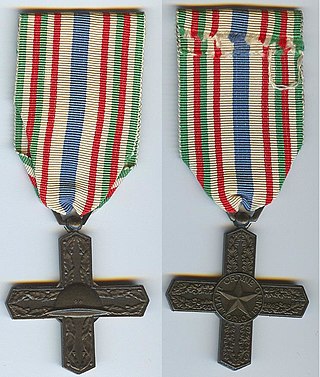
The military Order of Vittorio Veneto was an Italian order of chivalry that was founded as national order by the fifth President of the Italian Republic, Giuseppe Saragat, in 1968, "to express the gratitude of the nation" to those decorated with the Medal and the War Cross of Military Valor who had fought for at least six months in World War I and earlier conflicts.

The Italian honours system is a means to reward achievements or service to the Italian Republic, formerly the Kingdom of Italy, including the Italian Social Republic.
The Corpo della nobiltà italiana, sometimes referred to as CNI, is a private association established in 1957 to protect heraldic and nobility rights of Italian nobles after the republican constitution put an end to official recognition of nobility and noble titles.

The Presidency of the Council of Ministers is the administrative structure which supports the Prime Minister of Italy. It is thus the Italian equivalent of the Prime Minister's Office. It contains those departments which carry out duties invested in the office of the Prime Minister. Duties invested in the Italian executive government generally are not administered by the Presidency, but by the individual ministries.
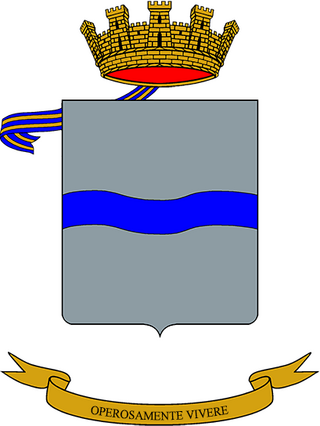
The Logistic Battalion "Mantova" is an inactive military logistics battalion of the Italian Army, which was assigned to the Mechanized Brigade "Mantova". The battalion's anniversary falls, as for all units of the Italian Army's Transport and Materiel Corps, on 22 May, the anniversary of the Royal Italian Army's first major use of automobiles to transport reinforcements to the Asiago plateau to counter the Austro-Hungarian Asiago Offensive in May 1916.
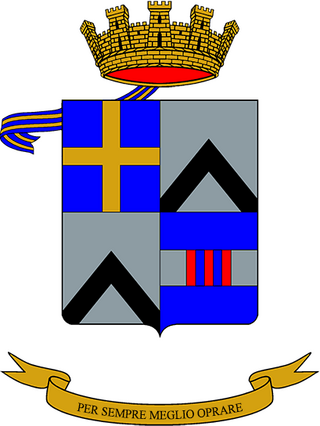
The 107th Signal Battalion "Predil" is a signals unit of the Italian Army. The battalion was formed in 1946 and assigned to the Infantry Division "Mantova". In 1975, the battalion was named for the Predil Pass and received the number 107th, which had been used by the 107th Teleradio Company that had served with the Combat Group "Mantova" during the Italian campaign of World War II. With the name and number the battalion also received its own flag. In 1991, the battalion was disbanded. In 2002, the battalion was reformed and assigned to the 7th Signal Regiment as the regiment's second signal battalion. The battalion's anniversary falls, as for all signal units, on 20 June 1918, the day the Austro-Hungarian Army began its retreat across the Piave river during the Second Battle of the Piave River.

The Logistic Battalion "Vittorio Veneto" is an inactive military logistics battalion of the Italian Army, which was assigned to the Mechanized Brigade "Vittorio Veneto". The battalion's anniversary falls, as for all units of the Italian Army's Transport and Materiel Corps, on 22 May, the anniversary of the Royal Italian Army's first major use of automobiles to transport reinforcements to the Asiago plateau to counter the Austro-Hungarian Asiago Offensive in May 1916.

The Logistic Battalion "Gorizia" is an inactive military logistics battalion of the Italian Army, which was assigned to the Mechanized Brigade "Gorizia". The battalion's anniversary falls, as for all units of the Italian Army's Transport and Materiel Corps, on 22 May, the anniversary of the Royal Italian Army's first major use of automobiles to transport reinforcements to the Asiago plateau to counter the Austro-Hungarian Asiago Offensive in May 1916.
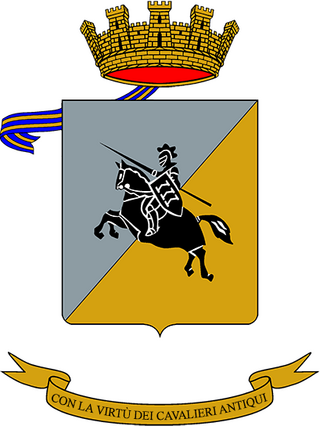
The Logistic Battalion "Pozzuolo del Friuli" is an inactive military logistics battalion of the Italian Army, which was assigned to the Cavalry Brigade "Pozzuolo del Friuli". The battalion's anniversary falls, as for all units of the Italian Army's Transport and Materiel Corps, on 22 May, the anniversary of the Royal Italian Army's first major use of automobiles to transport reinforcements to the Asiago plateau to counter the Austro-Hungarian Asiago Offensive in May 1916.
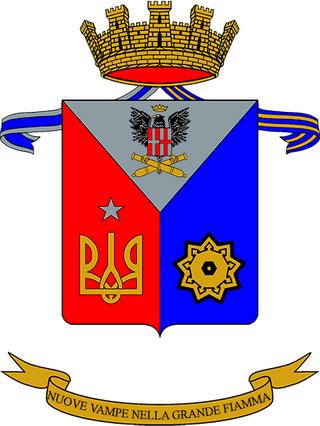
The 120th Motorized Artillery Regiment is an inactive field artillery regiment of the Italian Army, which was based in Palmanova in Friuli-Venezia Giulia. Originally an artillery regiment of the Royal Italian Army, the regiment was assigned in World War II to the 3rd Cavalry Division "Principe Amedeo Duca d'Aosta", with which the regiment was deployed to the Eastern Front, where division and regiment were destroyed during Operation Little Saturn. The unit was reformed in 1975 and disbanded 1991. The regimental anniversary falls, as for all Italian Army artillery regiments, on June 15, the beginning of the Second Battle of the Piave River in 1918.

The Libro d'oro della nobiltà italiana is a public and official register compiled both during the Regno d'Italia and in the Italian Republic before 1962. It contains the list of families registered by a "provision of Grace" or justice. Each family is treated on one or more pages, which include: country of origin, habitual residence of the family, noble titles and attributes with an indication of the origin and succession of noble titles, royal and governmental regulations, blazons and a part of the documented genealogy.

















